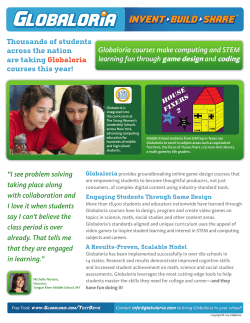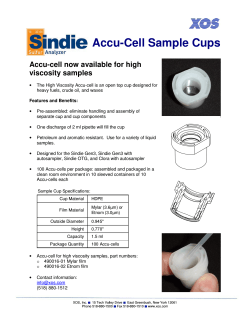
Horticultural Division - Indiana Daffodil Society
SHOW COMMITTEE General Chairmen ......................................................................Sue Luken & Diane Cockerham Schedule ............................................................................................... Suzy Wert & Jim Wilson Classification & Placement ... Helen Trueblood, Suzy Wert, Ruth Pelouch & Marilyn Ferguson Judges Chairman ...............................................................................................Kay Cunningham Hospitality Chairman .................................................................Ruth Pelouch & Joyce Wozniak Awards Chairmen ......................................................................... Mary Milberger & Suzy Wert Youth & New Exhibitors .................................................................. Sara Kinne & All Members Clerks Chairman ....................................................................................................... Pat Siegman Publicity ........................................................................................................... Diane Cockerham Show Recorders ........................................................................... Rosie Springer & Pat Siegman Dismantling ..............................................................................................................All Members ADS POINT SCALES FOR JUDGING CUT SPECIMENS: SCALE OF POINTS FOR JUDGING STANDARD DAFFODILS FORM ................................................. 25 CONDITION ...................................... 20 COLOR ............................................... 15 SUBSTANCE and TEXTURE............ 15 POSE and STEM................................. 15 SIZE .................................................... 10 100 SCALE OF POINTS FOR JUDGING MINIATURE DAFFODILS FORM & GRACE ............................... 25 CONDITION ...................................... 20 COLOR ............................................... 15 SUBSTANCE and TEXTURE........... 15 POSE and STEM................................. 15 SIZE .................................................... 10 100 SCALE OF POINTS FOR JUDGING SPECIES DAFFODILS CONDITION ...................................... 50 FORM ................................................. 15 COLOR ............................................... 10 SUBSTANCE ..................................... 10 TEXTURE ............................................ 5 POSE ..................................................... 5 STEM .................................................... 5 100 SCALE OF POINTS FOR JUDGING HISTORIC DAFFODILS CONDITION ...................................... 40 FORM ................................................. 15 COLOR ............................................... 15 SIZE .................................................... 10 POSE ..................................................... 5 STEM .................................................... 5 SUBSTANCE ....................................... 5 TEXTURE ............................................ 5 100 Note: Judges may deduct up to five points for lack of uniformity in judging vases of three stems of daffodils of one cultivar &/or species. 2 Show Committee ............................................................................. 2 ADS Point Scales for Judging ......................................................... 2 Acknowledgements ......................................................................... 3 General Rules .................................................................................. 4 Rules for Horticultural Exhibitors ................................................4-5 Sections A, B, C and D ..............................................................6-7 Section A-Single Stem Standard Section B-Three stems of one standard cultivar or species Section C-Single Stem Miniature Section D-Three stems of one miniature cultivar or species Section E Standard Collections of five ............................................ 8 Section G Grand Collections-Standards .......................................... 9 Section H-Historics ......................................................................... 9 Section I-Intermediates .................................................................... 9 Section L-Classics ........................................................................... 9 Section M-Miniatures .................................................................... 10 Section S-Small Growers .............................................................. 10 Section Y-Youth ............................................................................ 10 Section Z-IDS Classes-open only to IDS Members ...................... 10 American Daffodil Society Horticultural Awards ......................... 11 The Indiana Daffodil Society wishes to extend thanks to the following: Adam Barnes and the staff of Holliday Park. All out of town judges, clerks, and exhibitors who have given so generously of their time to travel to Indianapolis to help us achieve our show’s goals. Spud Brogden (Brogden Bulbs) for donating the New Zealand Award, which is the Award for the Best New Zealand bred daffodil in the Show. *Spud Brogden has donated two bulbs for the two best New Zealand bred varieties in the show, exhibited in any section. Eligible entries must be marked with a big “NZ” in the upper right hand corner of the entry card. 3 GENERAL RULES A. Exhibits may be entered from 2:00-8:45 pm (building closes at 9:00 pm) on Thursday, April 16, 2015 and again from 9:00 am to 11:00 am on Friday, April 17, 2015. Lunch will be served at 11:00 am and the show floor will be closed at that time except for the Classification Committee who will work between 11:00 and 11:45 to stage the show. B. Each exhibit must have a properly filled in Show Entry Card. Only the top half of the Entry Card needs to be filled in. Any information on a Show Entry Card which could compromise the anonymity of an exhibitor must be concealed during judging. Exhibitors are urged to read the Show Schedule carefully, including the Rules section, before preparing Show Entry Cards. Advance preparation of cards will enable you to place your entries quickly and correctly. C. The Classification Committee and Judges reserve the right to subdivide classes when there are more than three worthy exhibits in a class and if at least three worthy exhibits will be left in each subdivided class. D. The Show Committee will attempt to ensure that all exhibits are entered in appropriate classes before judging begins. However, each exhibitor is responsible for the accuracy of the entry card of his/her own show entries. E. Judging begins after lunch, around 11:45 am on Friday, April 17, 2015. Exhibits, awards and ribbons may not be removed prior to the closing of the show listed on the cover of the schedule. F. Exhibitors may not change, alter, re-label, substitute or remove an exhibit after judging has begun. If the Show Committee discovers an error before judging is completed, affected classes will be re-judged. If the error is discovered after judging is complete, any award will be forfeited. The decision of the Judges and Show Committee Chair is final. G. See our website: www.IndianaDaffodilSociety.org for trips and tricks on holding daffodils for show. Feel free to call our cell phone numbers the day of the show: Sue Luken 812-595-9488 or Suzy Wert 317- 478-5824 RULES FOR HORTICULTURAL EXHIBITORS 1. 2. 3. 4. 5. All classes in the Horticultural Division are open to anyone who grows daffodils, except as noted in the schedule, i.e., Classes G4 and M19 are only open to ADS members in good standing, and Section Z is only open to IDS members. See also Small Growers and Youth. An exhibitor may make as many entries as desired in any class, provided each entry is a different cultivar or species or an entirely different collection of cultivars and/or species. An exhibitor must have grown all blooms in the Horticultural Division in the open or in the open with temporary protection. Miniatures, species and container-grown daffodils may be grown in protected areas. The RHS System of Classification will be used. Labeling authority for color code, year and originator is Daffodils to Show and Grow, 2011 edition, which is amended annually in the Dec. ADS Journal or Daffseek.org. Color and Color Zone Definitions: Color Code means both the RHS Division and color code, i.e., 2Y-Y. The words “pink cup”, for example, describe daffodils where that color is solid, 2 W-P, or is present in two adjacent zones, 2 W-GPP or 2 W-PPY. The words “pink in cup” include daffodils with one or more cup zones of pink. The words “rimmed with pink” describe daffodils with pink only on the outer cup zone. “Colored” is any color other than white. “Predominantly” means the same color in at least two adjacent zones. A “reverse bicolor” has a color code indicating a predominantly colored perianth and a predominantly white cup. “Toned” refers to Dr. Throckmorton’s description of off-white, or very pale perianth color. 4 6. 7. 8. 9. 10. 11. 12. 13. 14. Only one First, one Second, and one Third Ribbon may be awarded in each class. Honorable Mention Ribbons may also be awarded if merited, but only if First, Second, or Third Ribbons have been awarded. First, Second, Third and Honorable Mention Ribbons may be withheld by the judges if, in their opinion, the exhibit is not worthy. Each stem in an exhibit receiving an ADS Award must score at least 90 on the appropriate ADS Scale of Points. Furthermore, if a Blue ribbon (First) has been awarded in a class eligible for an ADS Award, the judges may not withhold the ADS Award. Single-stem and three-stem entries for one cultivar or species must correctly list name and color code on the Show Entry Card. Exhibitors will use a single tube for three stem entries to make a vase of three. Entries that are not named, or are incorrectly named, will not be judged. All collections of five stems or more must be exhibited with each cultivar or species in a separate staging tube. Each daffodil in a collection must be legibly labeled with name and color code. In addition, name of originator is required for Country Collections: Classes E22 through E25 and M17, and year of introduction is required for Classics (Section L) and Historics (Section H). Exhibitors must provide their own labels. The name (type) of collection, for example, “White Collection”, “English Collection”, or “Quinn”, is required on the Show Entry Card. Classic Daffodils are those standard daffodil cultivars originated between 1940-1969 inclusive. Blooms of Classic daffodils may be shown in all classes for named standard cultivars; however, only those shown in Classics (Section L) will be eligible for the ADS Classics Ribbons. Section L requires year of origination as well as cultivar name and color code on the Show Entry Card. The earliest date shown in Daffodils to Show and Grow, 2011 edition, which is amended annually in the Dec. ADS Journal or Daffseek.org. will be the authority. Historic daffodils are daffodil cultivars originated before 1940. Blooms of historic daffodils may be shown in all classes for named cultivars; however, only those daffodils shown in Section H will be eligible for ADS Historic ribbons. Section H requires year of origination as well as cultivar name and color code on the Show Entry Card. The earliest date shown in Daffodils to Show and Grow, 2011 edition, which is amended annually in the Dec. ADS Journal or Daffseek.org. will be the authority. Intermediate daffodils are standard daffodil cultivars in RHS Divisions 1, 2, 3, 4, or 11, having a single floret whose diameter is typically between 2 - 3 1/8 inches (50-80mm) in diameter. Intermediate daffodils may be entered in classes for standard daffodils, as well as classes reserved for Intermediate daffodils. This means Intermediates entered in Sections E, G, H, L, S, Y, & Z are also eligible for the ADS Intermediate Ribbon, and it is a wise exhibitor who uses a colored marker available from the Show Committee to draw attention to her entries outside the Intermediate Section for consideration for the ADS Intermediate Ribbon. Miniature daffodils are daffodils named in the most recent ADS Approved List of Miniatures, with any official additions thereto, and are shown only in the classes for miniatures: Sections C, D & M and certain section classes as stated in the schedule. Any named or numbered diminutive daffodil that appears graceful, with all of its parts proportionately small, may also be entered in miniature classes, even if it is not on the official list, however, Judges may decline to judge an unofficial miniature if, in their opinion, it lacks grace or is too large to be considered a miniature. Blooms of seedlings may be shown in all classes for named cultivars. Seedlings shown by the originator require seedling number, color code and parentage, if known, and are to be marked with a colored marker if they are to be considered by the judges for the Rose Ribbon. Seedlings shown by others require the originator's name, seedling number and color code and are not eligible for the Rose Ribbon. 5 SECTION A — SECTION B — SECTION C — SECTION D — One Single Stem of a Standard Daffodil (see Rules 3 & 8) Three Stems of a Single Standard Cultivar or Species (see Rules 3 & 8) One Single Stem of a Miniature Daffodil (See Rules 3 & 13) Three Stems of a Single Miniature Cultivar or Species (Rules 3, 8 & 13) Section Letter & Class Number A B C D DIVISION 1 - TRUMPET DAFFODILS Yellow perianth, predominantly yellow trumpet Yellow perianth, predominantly orange or red trumpet Yellow perianth, pink in trumpet Reverse bicolor White perianth, white or GWW trumpet White perianth, yellow or orange in trumpet White perianth, pink in trumpet Any other color combinations A101 A102 A103 A104 A105 A106 A107 A108 B101 B102 B103 C101 D101 C201 D201 C301 D301 C401 D401 B104 DIVISION 2 - LARGE-CUPPED DAFFODILS Yellow perianth, yellow cup Yellow perianth, orange or red cup Yellow perianth, orange or red rimmed cup Yellow perianth, pink in cup Reverse bicolor White perianth, predominantly yellow cup White perianth, yellow rimmed cup White perianth, predominantly orange or red cup White perianth, orange or red rimmed cup White perianth, predominantly pink cup White perianth, pink rimmed cup White perianth, white or GWW cup Orange perianth, orange or red in cup Any other color combinations A201 A202 A203 A204 A205 A206 A207 A208 A209 A210 A211 A212 A213 A214 B201 B202 B203 B204 B205 B206 B207 B208 DIVISION 3 -SMALL-CUPPED DAFFODILS Yellow perianth, yellow cup Yellow perianth, orange or red cup Yellow perianth, orange or red rimmed cup Reverse bicolor White perianth, yellow, orange or red cup White perianth, yellow, orange or red rimmed cup White perianth, pink in cup White perianth, white or GWW cup Orange perianth, orange or red in cup Any other color combinations A301 A302 A303 A304 A305 A306 A307 A308 A309 A310 B301 B302 B303 B304 DIVISION 4 - DOUBLE DAFFODILS One Bloom to a Stem: Yellow perianth, petaloids predominantly yellow Yellow perianth, petaloids predominantly orange/red/pink Reverse bicolor White perianth, petaloids predominantly yellow White perianth, petaloids predominantly orange/red/pink White perianth, petaloids predominantly white Any other color combinations More Than One Bloom to a Stem: Colored perianth White perianth A401 A402 A403 A404 A405 A406 A407 A408 A409 6 B401 B402 B403 B404 ABCD- One Single Stem of a Standard Daffodil Three Stems of a Single Standard Cultivar or Species One Single Stem of a Miniature Daffodil Three Stems of a Single Miniature Cultivar or Species Section Letter & Class Number A B A501 A502 A503 A504 A505 A506 A507 B501 A601 A602 A603 A604 A605 A606 A607 A608 A609 B601 A701 A702 A703 A704 A705 A706 A707 A708 B701 C D C501 D501 C601 D601 C701 D701 C801 D801 DIVISION 5 - TRIANDRUS DAFFODILS Yellow perianth, yellow cup Yellow perianth, orange/red/pink in cup Reverse bicolor White perianth, yellow/orange/red in cup White perianth, pink in cup White perianth, white or GWW cup Any other color combinations B502 B503 B504 DIVISION 6 - CYCLAMINEUS DAFFODILS Yellow perianth, yellow cup Yellow perianth, orange/red in cup Yellow perianth, pink in cup Reverse bicolor White perianth, yellow in cup White perianth, orange/red in cup White perianth, pink in cup White perianth, white or GWW cup Any other color combinations B602 B603 B604 DIV. 7 - JONQUILLA & APODANTHUS DAFFODILS Yellow perianth, yellow cup Yellow perianth, orange/red in cup Yellow perianth, pink in cup Reverse bicolor White perianth, yellow/orange/red in cup White perianth, pink in cup White perianth, white or GWW cup Any other color combinations B702 B703 B704 DIVISION 8 - TAZETTA DAFFODILS Yellow perianth, yellow cup Yellow perianth, orange/red/pink in cup White perianth, yellow in cup White perianth, orange/red/pink in cup White perianth, white or GWW cup Any other color combinations A801 A802 A803 A804 A805 A806 B801 B802 B803 DIVISION 9 - POETICUS DAFFODILS White perianth, eye green White perianth, eye any other color A901 A902 B901 C901 D901 A1001 B1001 C1001 D1001 A1101 A1102 A1103 A1104 A1105 A1106 B1101 C1101 D1101 A1201 B1201 C1201 D1201 DIVISION 10 - BULBOCODIUM DAFFODILS Any color DIVISION 11 – SPLIT-CORONA DAFFODILS 11a 11a 11a 11a 11a 11b Colored perianth, colored corona White perianth, yellow in corona White perianth, orange/red/pink in corona White perianth, white or GWW corona Any other color combinations Any cultivar B1102 B1103 DIVISION 12 – MISCELLANEOUS DAFFODILS Any color DIVISION 13 – SPECIES DAFFODILS DISTINGUISHED SOLELY BY BOTANICAL NAME Any color A1301 7 B1301 C1301 D1301 SECTION E: STANDARD COLLECTIONS OF FIVE - five different cultivars, one stem each, each individually labeled with cultivar name and color code. (See Rules 5 & 9) DIVISIONAL COLLECTIONS - five different cultivars, one stem each, any colors TRUMPETS Five different cultivars from Division 1 Class E01 LARGE CUPS Five different cultivars from Division 2 Class E02 SMALL CUPS Five different cultivars from Division 3 Class E03 DOUBLES Five different cultivars from Division 4 Class E04 TRIANDRUS Five different cultivars from Division 5 Class E05 CYCLAMINEUS Five different cultivars from Division 6 Class E06 JONQUILLAS Five different cultivars from Division 7 Class E07 TAZETTAS Five different cultivars from Division 8 Class E08 POETS Five different cultivars from Division 9 Class E09 BULBOCODIUMS Five different cultivars from Division 10 Class E10 SPLIT-CORONAS Five different cultivars from Division 11 Class E11 OTHER Five different cultivars from Division 12 Class E12 SPECIES AND INTERSECTIONAL HYBRIDS Five different daffodils distinguished solely by botanical name Class E13 COLOR COLLECTIONS TRADITIONAL PALE-COLORINGS ANGELIC - five different cultivars, one stem each, any division, in the following colors Yellow perianth, yellow cup daffodils Class E14 White, “toned”, or lemon colored perianth, and a corona of lemon, amber, or lavender White daffodils, a green eye is acceptable. Class E15 Class E16 IT’S A GIRL! Yellow or orange perianths with predominantly orange or red in cup Daffodils with predominantly pink in cup IN REVERSE ADS Maroon Ribbon. Reverse bicolor daffodils (See Rule 5) Class E19 SUNNYSIDE UP Bicolor daffodils: white perianth, yellow cup Class E20 White perianth, cup rimmed with yellow or pink Class E21 LIL’ DEVIL RING AROUND THE ROSIE Class E17 Class E18 COUNTRY OF ORIGIN COLLECTIONS - five different cultivars, one stem each, any division. The entry must also include the name of the originator. ENGLISH ADS Red-White-and-Blue Ribbon. Cultivars bred in the USA. Cultivars bred in England and Wales IRISH Cultivars bred in Northern Ireland or Ireland Class E24 DOWN UNDER Cultivars bred in Australia &/or New Zealand *Spud Brogden has donated two bulbs for the two best New Zealand bred varieties in the show, exhibited in any section. Eligible entries must be marked with a big “NZ” in the upper right hand corner of the entry card. Class E25 AMERICAN 8 Class E22 Class E23 SECTION G: GRAND COLLECTIONS OF STANDARD DAFFODILS (Rules 1, 6 & 9) BOZIE Twelve different cultivars or species, one stem each, from at least four RHS Divisions. (Eligible for the ADS Bozievich Ribbon) HAVENS Twelve different cultivars from RHS Divisions 5 through 10, one stem each, from at least three RHS Divisions (Eligible for the ADS Havens Ribbon) THROCKMORTON Fifteen cultivars, one stem each, from fifteen different RHS color code classifications (Eligible for the ADS Throckmorton Ribbon) QUINN Twenty-four different cultivars or species, one stem each, from at least five RHS Divisions. Exhibitor must be member in good standing of ADS to enter the class. (Eligible for the ADS Carey E. Quinn Medal/Ribbon) DECADES The Decades Collection: One stem each from seven different decades; decades begin with 0 and end in 9. Each flower must have year of registration. Sponsored by IDS. Winner will receive a $25.00 gift certificate for bulbs from Oakwood Daffodils. Class G1 Class G2 Class G3 Class G4 Class G5 SECTION H: HISTORIC DAFFODILS – Pre-1940 (See Rules 4, 9 & 11) This section is open to all Standard and ADS Approved Miniature cultivars (i.e., not species) introduced or in gardens before 1940. All cultivars shall be labeled with name, color code, and year of registration or introduction as shown in the Daffodils to Show and Grow, 2011 Edition; or Daffseek.org. Rule C is extended to permit subdividing by year, decade, and/or color code. Pre-1900 1900-1919 1920-1939 Any pre-1940 One stem, one standard cultivar Three stems, one standard cultivar Collection of five different standard cultivars, one stem each, Historic Collection of Five Ribbon Class H1 Class H2 Class H3 Class H4 Class H5 The Joe Hamm Award Rosette One Stem, one miniature cultivar Three stems, one miniature cultivar Collection of five different miniature cultivars, one stem each, Historic Collection of Five Ribbon Class H6 Class H7 Class H8 SECTION I: INTERMEDIATE DAFFODILS - (See Rules 4, 9, & 12) Intermediate sized single-floreted standard daffodil cultivars from RHS Divisions 1, 2, 3, 4, or 11. Bloom is normally between 2 -3 1/8 inches (50-80mm) in diameter. No species. Rule 12 addresses sections where these flowers may be exhibited to win the Best Intermediate Single Stem Ribbon. Division 1 Trumpets 2 Large Cups 3 Small Cups 4 Doubles 11 Split Cups One stem, one standard cultivar Class I 1 Class I 2 Class I 3 Class I 4 Class I 5 Three stems, one standard cultivar Collection of five different cultivars, one stem each (Rule 9) Class I 6 Class I 7 SECTION L: CLASSIC DAFFODILS - (See Rules 4, 9 & 10) Species are excluded. 1940-1949 1950-1959 1960-1969 One stem, one standard cultivar Class L1 Class L2 Class L3 Three stems, one standard cultivar Collection of five different cultivars, one stem each (Rule 9) Class L4 ADS Classic Vase of Three Ribbon Class L5 ADS Classic Daffodil Collection 9 SECTION M: MINIATURE DAFFODIL COLLECTIONS - (See Rules 2, 3, 8, 9, and 13) Five different stems from more than one RHS Division, including species (Eligible for the ADS Lavender Ribbon) Five different stems, each from the same RHS Division (Eligible for the ADS Lavender Ribbon) ADS MINIATURE RED-WHITE-AND-BLUE RIBBON Five different cultivars bred in USA, one stem each. (Eligible for the ADS Lavender Ribbon) DELIA BANKHEAD Nine different cultivars or species, one stem each from at least three RHS Divisions (Eligible for the ADS Delia Bankhead Ribbon) ROBERTA C. WATROUS Twelve different cultivars or species, one stem each, from at least three RHS Divisions. Exhibitor must be member in good standing of ADS to enter the class. (Eligible for the ADS Roberta C. Watrous Medal/Ribbon;* see Rule 1) Class M15 Class M16 Class M17 Class M18 Class M19 SECTION S: SMALL GROWERS SECTION - Open to anyone growing fewer than 50 different cultivars and/or species. Rule C is extended to permit subdividing by color or division. RHS Divisions 1-4 RHS Divisions 5-13 One standard stem Class S1 Class S2 Three stems, one standard cultivar Class S3 SECTION Y: YOUTH DIVISION - For exhibitors 20 years old or younger. Youth exhibitors are not restricted to this section; they may elect to enter other sections for which their exhibits qualify. Rule C is extended to permit subdividing by color or division. Standard cultivar or species Miniature cultivar or species (See Rule 8) One stem Three stems, one cultivar Collection of five different cultivars Class Y1 Class Y2 Class Y3 Class Y4 SECTION Z: INDIANA DAFFODIL SOCIETY CLASSES --OPEN ONLY TO IDS MEMBERS (See Rules 1, 8 & 9) THE HELEN K. LINK AWARD — For a collection, three stems each of five different cultivars from RHS Divisions 5-9. Sponsored by IDS. Winner will receive a $25.00 gift certificate from Cherry Creek Daffodils in Sherwood, Oregon. THE HELEN TRUEBLOOD AWARD — Three stems each of three different Intermediates. (See Rule 8) The Helen Trueblood Award Rosette IDS CLUB CHALLENGE AWARD 2015 — One stem of Curly Lace IDS CLUB CHALLENGE AWARD – EARLIER YEARS — One stem of standard (Class Z4a) or miniature (Class Z4b) to be subdivided as necessary. White Owl, Pogo, Foxfire, Orange Way, Altun Ha, Little Rusky, Ocean Breeze, Reggae, or Rapture PARENT & CHILD — Exhibit of a daffodil with its parent or grandparent. Sponsored by IDS. Prize is a $25.00 gift certificate from Oakwood Daffodil in Niles, Michigan CLOSE-FOCUS LOCUS — One stem, any color code, whose corona and its appealing color detail is best viewed at close range. Sponsored by Suzy Wert. $25.00 gift certificate for bulbs from Cherry Creek Daffodils in Sherwood, Oregon. NO YELLOW HERE — Best cyclamineus hybrid (Div 6) entered in this section without yellow in its color code. Sponsored by Sara Kinne. $25.00 gift cert.to Daffodils & More. SCENTED BREEZE — A collection of three different daffodils, each in a separate tube, all from the scented RHS Divisions: Div 7 jonquillas and Div 8 tazettas. Sponsored by Ruth Pelouch. $25.00 gift certificate from Bill Welch Daffodils in Santa Cruz, California. 10 Class Z1 Class Z2 Class Z3 Class Z4 Class Z5 Class Z6 Class Z7 Class Z8 AMERICAN DAFFODIL SOCIETY HORTICULTURAL AWARDS Gold Ribbon: Best standard daffodil White Ribbon: Best vase of three stems of standard daffodils. Rose Ribbon: Best standard seedling exhibited by its originator. Purple Ribbon: Best collection of five different standard daffodils from any Section. Red-White-and-Blue Ribbon: Best collection of five different standard cultivars, one stem each, of American breeding (Class E22). Maroon Ribbon: Best collection of five different standard cultivars, one stem each, reverse bicolor, from any division or divisions (Class E19). Marie Bozievich Ribbon (Green Ribbon): Best collection of twelve different cultivars and/or species of standard daffodils from at least four RHS divisions (Class G1). Elise Havens Ribbon: Best collection of 12 standard cultivars from no fewer than three divisions of RHS Divisions 5 through 10. (Class G2) Thomas D. Throckmorton Ribbon: Best collection of fifteen cultivars and/or species of standard daffodils from fifteen different RHS classifications (Class G3). Cary E. Quinn Award: Silver Medal or Ribbon for the best collection of twenty-four different cultivars and/or species of daffodils from at least five RHS Divisions. The medal may be won only once by any exhibitor in all ADS shows where offered. A former winner may exhibit in this class but may receive only the Quinn Ribbon. Open only to ADS members. (Class G4). Miniature Gold Ribbon: Best miniature or species miniature daffodil Miniature White Ribbon: Best vase of three stems of miniature or species miniature daffodils. Miniature Rose Ribbon: Best miniature seedling exhibited by its originator. Lavender Ribbon: Best collection of five miniature daffodils. Miniature Red-White-and-Blue Ribbon: Best collection of five different miniature cultivars, one stem each of American breeding (Class M17). Delia Bankhead Ribbon: Best collection of nine miniature cultivars and/or species, one stem each from at least three different RHS divisions. (Class M18) Roberta C. Watrous Award: Silver Medal or Ribbon for the best collection of twelve different cultivars and/or species of miniature daffodils from at least three RHS Divisions. This medal may be won only once by any exhibitor in all ADS shows where offered. A former winner may exhibit in this class but may receive only the Watrous Ribbon. Open only to ADS members (Class M19). Classics Ribbons: Best in Section, Best exhibited in Single Stems, Best Vase of Three, Best Collection of Five – all registered between 1940-1969 (all from Section L) Youth Ribbons: Standard or Miniature exhibited by a person twenty years of age or younger. Best in Section, Best Vase of Three (Y3), Best Collection of Five. (all from Section Y) Small Growers Ribbon: Best standard daffodil exhibited in Section S by a Small Grower growing fewer than 50 different daffodil varieties. Historic Daffodil Ribbons: Standard or Miniature registered prior to 1940. Best in Section, Best Vase of Three, Best Collection of Five (all from Section H) Intermediate Ribbons: Best intermediate-size single-floreted cultivar typically between 1½ – 3 inches (50mm to 80mm) in RHS Divisions 1-4 + 11.) Also the Best Vase of Three Intermediates and Best Collection of Five Intermediates Ribbons. Silver Ribbon: Awarded to the exhibitor winning the most first place ribbons in the Horticultural Division. 11 12
© Copyright 2025












